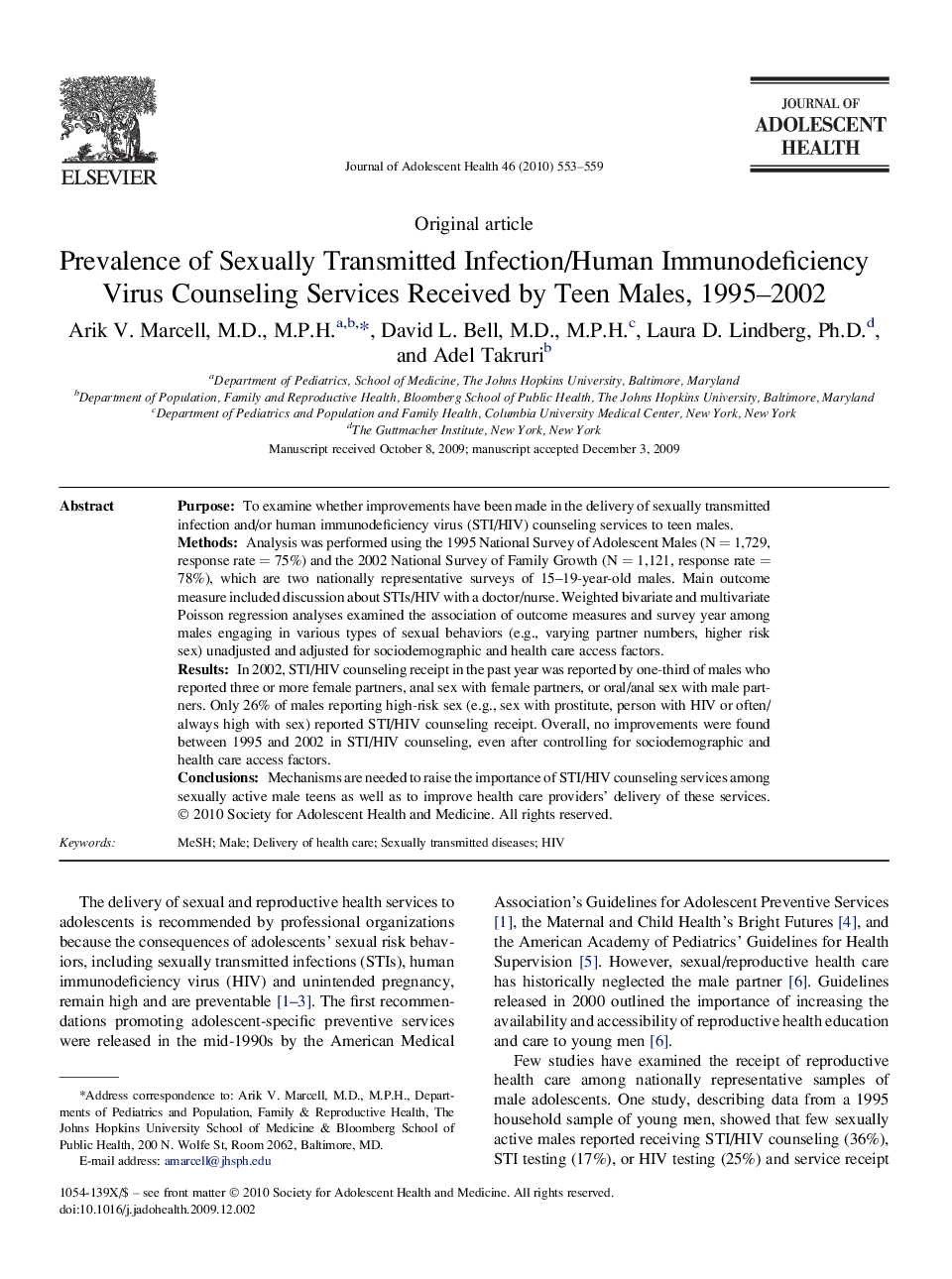| Article ID | Journal | Published Year | Pages | File Type |
|---|---|---|---|---|
| 1080028 | Journal of Adolescent Health | 2010 | 7 Pages |
PurposeTo examine whether improvements have been made in the delivery of sexually transmitted infection and/or human immunodeficiency virus (STI/HIV) counseling services to teen males.MethodsAnalysis was performed using the 1995 National Survey of Adolescent Males (N = 1,729, response rate = 75%) and the 2002 National Survey of Family Growth (N = 1,121, response rate = 78%), which are two nationally representative surveys of 15–19-year-old males. Main outcome measure included discussion about STIs/HIV with a doctor/nurse. Weighted bivariate and multivariate Poisson regression analyses examined the association of outcome measures and survey year among males engaging in various types of sexual behaviors (e.g., varying partner numbers, higher risk sex) unadjusted and adjusted for sociodemographic and health care access factors.ResultsIn 2002, STI/HIV counseling receipt in the past year was reported by one-third of males who reported three or more female partners, anal sex with female partners, or oral/anal sex with male partners. Only 26% of males reporting high-risk sex (e.g., sex with prostitute, person with HIV or often/always high with sex) reported STI/HIV counseling receipt. Overall, no improvements were found between 1995 and 2002 in STI/HIV counseling, even after controlling for sociodemographic and health care access factors.ConclusionsMechanisms are needed to raise the importance of STI/HIV counseling services among sexually active male teens as well as to improve health care providers' delivery of these services.
